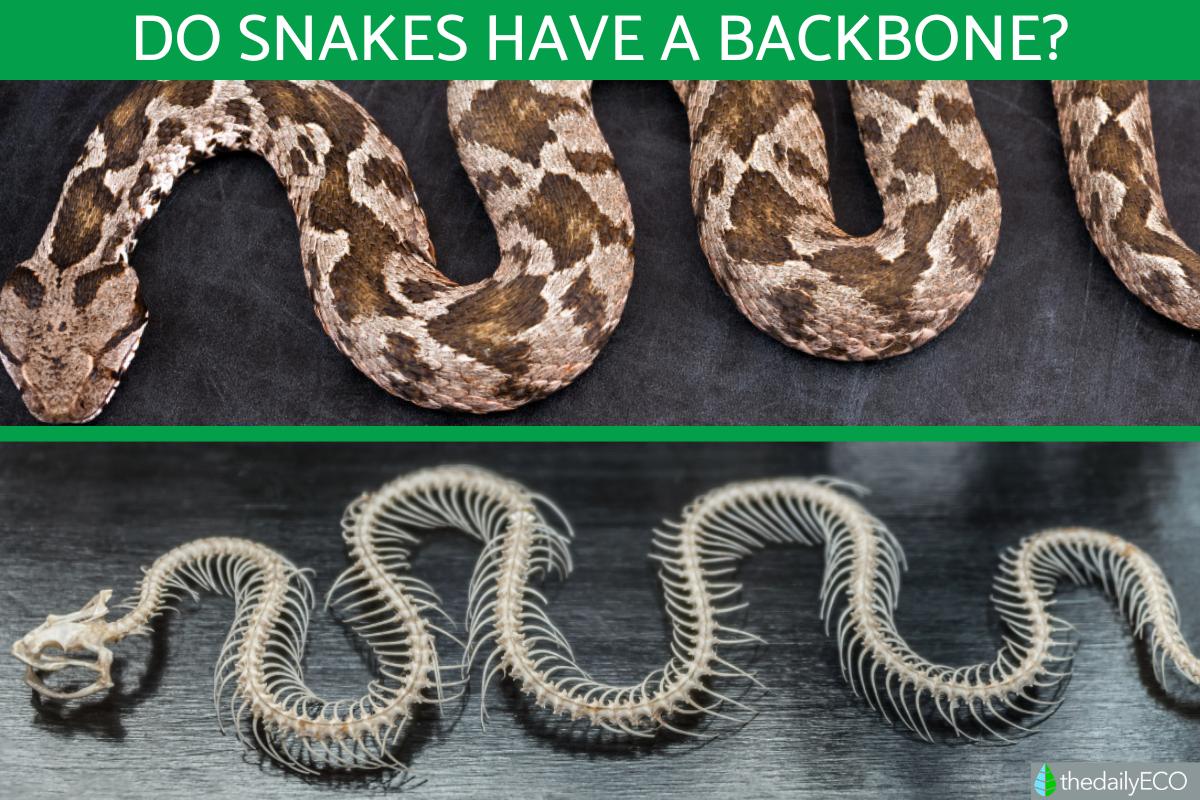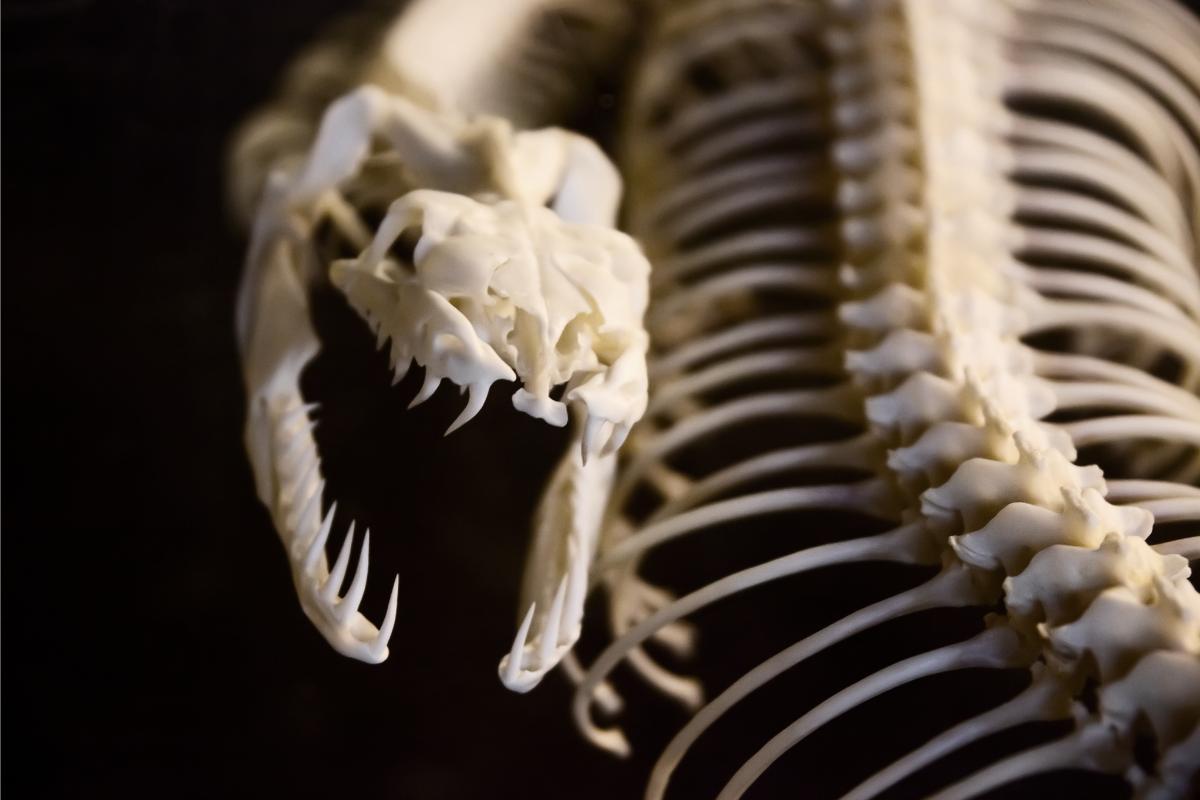Does a Snake Have a Backbone?


Like worms, snakes move in a sidewinding or reticular motion that allow them to traverse the ground without limbs. Worms are invertebrates which mean they lack a backbone by definition. Despite snakes often appearing like large worms, they are a very different animal. In fact, they are vertebrates because they have a skeleton and spinal column. They are members of the order Squamata which also contains lizards, but they are the only extant members without limbs. Despite this, they have much more in common with vertebrates than invertebrates. We explain more at thedailyECO by asking do snakes have a backbone?
Do snakes have a backbone?
Less commonly known as ophidians, snakes are a suborder of diapsid reptiles that belong to the order Squamata and the superorder Lepidosauria. These creatures are characterized by having very elongated bodies without any limbs. They originated in the Cretaceous period.
Like all reptiles, snakes belong to the group of animals known as vertebrates. They are defined by having certain characteristics with the presence of a vertebral column or backbone being one of the most definitive. They also have an internal skeleton which acts as structural support, although the exact form of this skeleton differs across vertebrate species.
A snake skeleton is characterized by more than the presence of a backbone. Attached to this backbone is a series of floating ribs which extend forward and have no sternum. The ribs reinforce the rigidity of their body, allowing them to better cope with the roughness of the terrain they traverse while moving. Numerous muscles are attached to the ribs which give them greater capacity for movement and greater speed across uneven land.
In short, snakes have a backbone and other bones which make up their skeleton. These vertebrate reptiles have developed a bone system adapted to their locomotor and nutritional needs. This allows them to move with agility and speed. It even allows them swallow large prey without having to chew.
Learn more about carnivorous animals like snakes with our article on the difference between predator vs. prey.

What is a snake skeleton like?
The skeleton of the snake is made up of a skull and numerous vertebrae with attached ribs. Unlike other vertebrates, they lack a waist and therefore do not have hip bones. This also means they have no limbs, a distinguishing feature of a snake skeleton. Some families of snake may show limb vestigial limb remnants. The snake's skeleton is essentially divided into two parts of the skull with the jaw and the spine with the ribs.
Snake skull
The skull of snakes exhibits a diapsid structure, characterized by the presence of two temporal fossae behind the eye orbits. One of its distinctive features is the kinetic skull, composed of multiple pieces with movable joints.
Snake jaws are not rigid. The lower jaw is joined by muscles and skin, allowing great expansion when feeding. For example, the Burmese python can stretch its jaws enough to ingest prey up to six times larger than similarly sized snakes.
Snake backbone
The spine of snakes is made up of numerous vertebrae, each of which supports a pair of ribs. During movement, the posterior ventral scales are fixed to the ground while muscles propel forward movement. The vertebral column runs through the entire body and almost all of the vertebrae in front of the cloaca are associated with a pair of ribs, which can exceed 300 in number.
The variation in the number of vertebrae of snakes is related to both the length of the snake and its lifestyle. For example, constrictor snake species tend to have more vertebrae than those with other hunting strategies.

Characteristics of snakes
As we mentioned before, snakes are a group of reptiles that belong to the order Squamata. These curious elongated animals have the following characteristics:
- Snakes are limbless creatures that adjust to their environment to move and capture prey. They have skin covered in scales and a skeleton that gives them notable flexibility and agility.
- Although they lack limbs, snakes move quickly by gliding along the ground and climbing trees. Some species are even capable of swimming such as sea snakes. Sea snakes also have a backbone.
- Snakes have two eyes without eyelids on their heads which are protected by a transparent scale. In addition, they have a forked tongue that makes it easier for them to detect odors in their environment.
- These reptiles continually experience their skin changing as they mature. The frequency of these molts varies depending on hormones and environmental conditions. In addition, the scale that protects its eyes is renewed regularly. Learn about another reptile with a specialized skin in our article on why chameleons change color.
- Snakes are distributed throughout the world, adapting to a wide variety of habitats that include from low areas to high mountains, through deserts, humid forests and arctic tundra regions.
- Snakes are predators that consume small mammals, birds, other reptiles and various invertebrates. Among them, some have venom that they use to hunt and protect themselves, while others capture live prey without being poisonous.
Now that you know if the snake is a vertebrate or invertebrate, you may want to read our related article on the most venomous fish types.
If you want to read similar articles to Does a Snake Have a Backbone?, we recommend you visit our Facts about animals category.
- Jayne, B., et al. (2022). Scaling of maximum aperture ratios in two species of large invasive snakes, brown tree snakes and Burmese pythons, and implications for maximum prey size. Integrative Organic Biology, 4(1).
https:/ /doi.org/10.1093/iob/obac033 - Lillywhite, H. (2014). How snakes work. Structure, Function and Behavior of World Snakes. Oxford University Press. ISBN: 9780195380378







